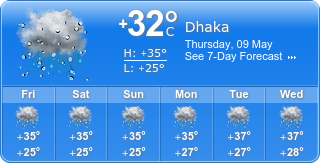Yemen's Hodeida calm after ceasefire takes effect
A man stands amid the rubble of a factory damaged by fighting in Yemen's port city of Hodeida, on December 17, 2018
Sanaa (AFP) - Yemen’s flashpoint city of Hodeida was calm Tuesday as a ceasefire took effect and a team including members of the warring sides prepared to monitor the truce agreed at talks in Sweden.
A lasting ceasefire would be a major step in efforts to end Yemen’s devastating war, which has killed thousands and left 14 million people on the brink of famine.
The truce which came into force overnight was due to be followed by a team of observers deploying “within 24 hours”, a United Nations official said.
The Redeployment Coordination Committee includes members of the Saudi-backed government and the Iran-aligned Huthi rebels but is chaired by the UN, said the official who requested anonymity.
“Both parties said publicly they are abiding by the ceasefire,” the official told AFP.
The observers are due to oversee the implementation of the truce, the withdrawal of both warring parties from Hodeida city and the pullout of Huthis from its major ports.
The committee chair is expected to report to the UN Security Council on a weekly basis, as part of a diplomatic push to end the conflict which erupted in 2014.
The war between the Huthi rebels and troops loyal to President Abedrabbo Mansour Hadi escalated in 2015, when a Saudi-led military coalition stepped in on the government’s side.
Since then some 10,000 people have been killed, according to the World Health Organization, but some rights groups believe the toll is far higher.
- ‘Complete calm’ -
The ceasefire was meant to enter into force at midnight (2100 GMT) on Monday but clashes continued until 03:00 am, pro-government sources and residents said.
Calm held on Tuesday morning in Hodeida city, whose port is the gateway for the vast majority of imports to Yemen.
“There has been complete calm since 03:00 am Yemen time in the city of Hodeida,” a military source loyal to the government told AFP.
Residents confirmed by phone that there has been no fighting between the government forces backed by the Saudi-led coalition and Iran-aligned Huthi rebels since 03:00 am.
Chronology of the conflict in Yemen, with map and details of the humanitarian crisis
But it was not possible to determine if the halt in fighting was in response to the ceasefire or just a temporary stoppage.
Residents said that daily fighting would usually be fierce in the evening and at night, before coming to a standstill at dawn.
The two warring sides have welcomed the truce in the strategic Red Sea province.
The agreement reached last week included an “immediate ceasefire” in Hodeida and its surrounds, but the truce was delayed as fighting continued.
- Hodeida residents ‘hopeful’ -
UN envoy Martin Griffiths said on Sunday that the UN was working with both sides to ensure the ceasefire accord was “implemented timely and properly”.
In addition to the withdrawal of fighters from Hodeida, the agreement included a planned prisoner swap involving some 15,000 detainees.
A “mutual understanding” was also reached to facilitate aid deliveries to Yemen’s third city Taiz – under the control of loyalists but besieged by rebels.
The two sides have agreed to meet again in late January for more talks to define the framework for negotiations on a comprehensive peace settlement.
Hodeida residents said they hoped the truce would lead to lasting peace.
A market in Yemen's port city of Hodeida on December 14, 2018
“We are hopeful that things will go back to the way they were and that there would be no aggression, no air strikes and lasting security,” Amani Mohammed told AFP.
Another resident, Mohammed al-Saikel, said he was optimistic the ceasefire would pave the way for a broader truce.
“We are hopeful about this ceasefire in Hodeida and one for Yemen in general,” he said.
“We will reach out in peace to whoever does the same.”








No comments